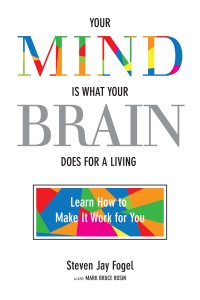The Interplay between Mindful Awareness and the Brain as “Anticipation Machine”

Let’s look at what’s happening in our brains when we operate on automatic pilot that allows our Organizing Principles to run us, no matter how dysfunctional these beliefs may be and how disabling a bind they create for us. Because of the brain’s very nature and structure, we are programmed to react. That’s what we do: We constantly react to everything in our life because our brain is set up to scan, monitor, and evaluate the world in order to anticipate future outcomes of current situations and to respond according to its evaluation.
As Daniel Siegel, M.D., explains it, the brain is “an anticipation machine” structured to take experiences that happened in the past and use them to come up with expectations about what will happen in the future. This means that “prior learning shapes present perceptions.”
It’s important to note that in this context the word learning doesn’t imply that the “learning” is necessarily accurate knowledge. It just means that what the mind has learned from the past— including our self-defeating Organizing Principles—has become hardwired in our brains. When you’re on automatic, it’s this prior learning, your programming, that determines how you experience what’s happening right now and what you anticipate for the future.
When your brain functions on automatic pilot, neuroscientists refer to the process as being “top-down.” As Siegel explains it, when your brain is functioning top-down, “prior learning will enslave incoming data.” When this happens, the past keeps you from experiencing the present because it keeps you from really being in the present!
This is why your Organizing Principles can trigger inappropriate and dysfunctional behavior. After all, how could your actions in the moment be appropriate and serve you if they are based on mistaken, past-based interpretations?
Top-down functioning isn’t just a theoretical way to label what happens in your brain. It actually describes a physiological process. Here’s how it works.
The cortex—the neural tissue that covers a large part of the brain—has six layers, each of which is as thick as a business card. Input (information) from the five senses and other direct experience of the present situation comes in through the sixth layer at the bottom (Siegel calls this “bottom-up” input) and goes up to the fifth layer. Top-down input from prior learning comes down from the first and second layers.
At the third and fourth layers, data from the past—your mind’s anticipations, judgments, and expectations, including its underlying beliefs that I refer to as your Organizing Principles—comes down and crashes into data from the present that’s coming up, and this is where, when you’re on automatic pilot, the top-down data enslaves the data that’s coming in from the current situation so that “you don’t see the present clearly.”
Let’s say you’re in a room where a piece of instrumental music is playing. With a bottom-up experience, you hear the melody, the rhythm, the tone, and the unique sounds of each of the instruments in harmony or in counterpoint. At first you take in the music (the input) with your sense of hearing, but the melody, rhythm, and tone may be so engaging and moving that you start to feel the music in your body. You might even start to dance. You are experiencing the music moment by moment as you hear it.
In contrast, with a top-down experience, while the music is playing you might think about other versions of the piece that you’ve heard before or other pieces you’ve heard by the same composer or different composers. You might judge this version of the piece against other versions or other pieces of music and think about which you like better. Or you might think about something else entirely, such as work that you didn’t complete at the office or a date that you hope to make for the weekend.
The point is that with top-down experience, you are not in the moment with the music because other data takes dominance over your experience of the music. You cannot experience the melody, rhythm, tone, or performance of the music in and of itself because what you’re experiencing is being controlled by top-down data that’s interfering with a direct experience of the music in the present.
An excerpt from my recent book, Your Mind Is What Your Brain Does for a Living, now available at Amazon.
- 20 Nov, 2014
- Posted by Steve Fogel
- 0 Comments



COMMENTS